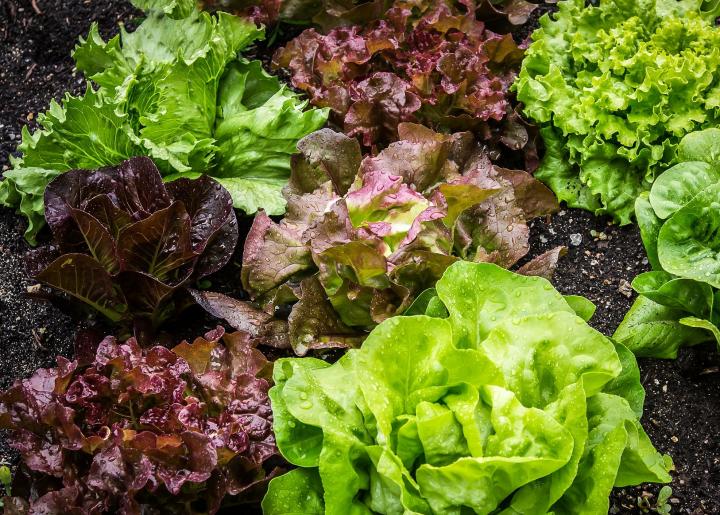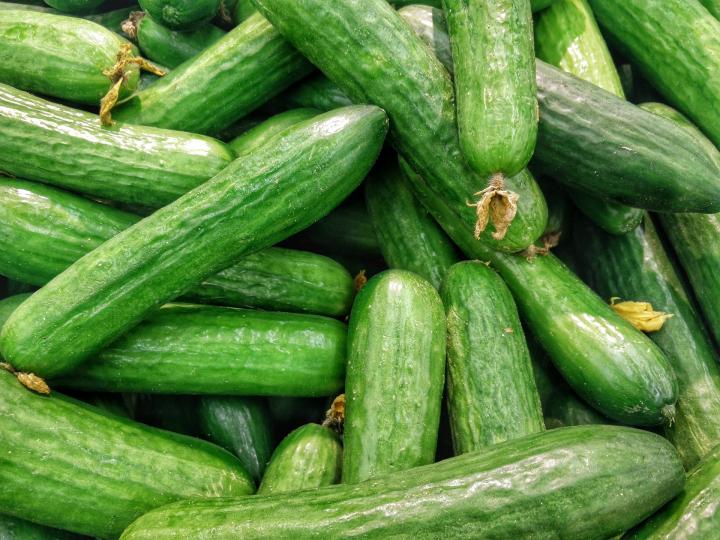This comprehensive guide covers how to start a vegetable garden from scratch, which vegetables to grow, and when to plant what. Vegetable gardening at home can be a way to save money while you get up close and personal with nature.
Dig into these tips and tricks to get your vegetable garden off to a strong start.
1. Start with a Small Space
:strip_icc():format(webp)/drip-irrigation-system-lettuce-bf7a920c-906d5a06522742b2af962d2565b190d7.jpg)
If you’re a beginner gardener, start small. It’s better to be thrilled by what you produce in a small garden than be frustrated by the time commitment a big one requires. It’s also best to learn a few gardening basics before investing tons of time and money in this new hobby. You’ll get a feeling for how much time gardening takes. You’ll find out if you like spending time outside planting, watering, and weeding. You’ll also learn how much produce you and your family can eat over the course of a summer.
2. Grow What You Love to Eat
What do you like to eat? Your answer will tell you what you should plant in your vegetable garden. There are also a few other things to keep in mind when deciding what you want to grow.
Be Picky About Varieties
Pay close attention to the description on the seed packet, tag, or label. Each variety of vegetable comes with certain characteristics. Some produce smaller plants ideal for containers or small gardens. Other varieties offer better disease resistance, improved yields, or better heat- or cold-tolerance. Start by choosing veggies you like to eat, then look into their sizes and care needs.
Productivity
Think about how much you and your family will eat and how likely you are to freeze, can, or give away excess produce. Then be realistic about how many seeds or plants you need to put into the ground. Many beginners make the mistake of planting too much. Vegetables like tomatoes, peppers, and squash keep providing throughout the season, so you may not need many plants to serve your needs. Other vegetables, such as carrots, radishes, and corn, can be harvested only once and then would need to be replanted.
3. Pick the Right Location

Picking a good location for your garden is absolutely key. A subpar location can result in subpar veggies! Here are a few tips for choosing a good site:
- Sunny spot: Most vegetables need 6 to 8 hours of direct sunlight daily. A few veggies (mostly leafy ones) will tolerate some shade.
- Drains well and doesn’t stay wet: If you have poorly drained soil where water pools, plant veggies in a raised bed or raised row for improved drainage. Wet soil means wet roots, which can turn into rotted roots. If you have rocky soil, till and remove the rocks, as they will interfere with root growth and make for weaker plants.
- Stable and not windy: Avoid places that receive strong winds that could knock over your young plants or keep pollinators from doing their job. Nor do you want to plant in a location that receives too much foot traffic or floods easily. Plant in a location that would make Goldilocks smile—somewhere “just right.”
- Nutrient-rich soil. Your soil feeds your plants. You’ll have poor, unhealthy plants if you have thin, nutrient-poor soil. Mix in plenty of organic matter to help your plants grow. See how to prepare your soil for vegetable plants.
4. Choosing Vegetables

As a beginner, start by choosing easy vegetables that are also productive. Below, we’ve listed some of the easiest vegetables for beginners. Most are best started by seeds planted directly into the soil, unless noted.
However, it would also be wise to contact your state’s Cooperative Extension Service to find out what plants grow best in your area. For example, if you live in an area with extremely hot weather, vegetables that prefer cooler temps may struggle.
Top 10 Easiest Vegetables to Grow
- Lettuce
- Green beans
- Radishes
- Tomatoes (by transplant, i.e. small nursery plant)
- Zucchini
- Peppers (by transplant, i.e. small nursery plant)
- Beets
- Carrots
- Chard, Spinach, or Kale
- Peas
Five tips for choosing vegetables:
- Choose what you (and your family) like to eat. If no one likes Brussels sprouts, don’t bother planting them! But if your kids love green beans, put more effort into growing a big crop of beans.
- Be realistic about how many vegetables your family will eat. Be careful not to overplant, as you will only stretch yourself thin by trying to take care of tons of plants! (You could always give excess veggies away to friends, family, or the local soup kitchen.)
- Consider the availability of veggies at your grocery store. Maybe you want to grow tomatillos instead of cabbage or carrots, which are readily available in your area. Also, certain veggies are so far superior when homegrown that it’s almost a shame not to consider them (we’re thinking of garden lettuce and tomatoes). Also, homegrown herbs are far less expensive than grocery-store herbs.
- Be prepared to take care of your plants throughout the growing season. Going on a summer vacation? Remember that tomatoes and zucchinis grow strongest in the middle of summer. If you’ll be gone for part of the summer, you need someone to look after the crops, or they will suffer. You could also just grow cool-season crops such as lettuce, kale, peas, and root veggies during the cooler months of late spring and early fall.
- Use high-quality seeds. Seed packets are less expensive than individual plants, but if seeds don’t germinate, your money—and time—are wasted. A few extra cents spent in spring for that year’s seeds will pay off in higher yields at harvest time.
6. Think About Convenient Water Access
The closer you can site your plot to a water source, the better. You’ll need to be able to water frequently during the first few weeks after seeds germinate or seedlings are transplanted to help these fragile plants produce strong roots and stems. Once your plants are established, it’s better to give your garden a long drink every few days rather than a little sprinkle every day. Then the water will move deeper into the soil, which encourages roots to grow deeper, where they’re better able to access nutrients they need to stay healthy. Consider installing soaker houses or drip irrigation on a timer to help minimize water waste and the time you need to spend watering.
7. Start Plants in Rich Soil
:strip_icc():format(webp)/beetle-on-chewed-leaf-ac583b8a-a9cd2a65fcd5469181ecf8ba5b4fab69.jpg)
For the best harvest, your vegetable garden needs the best soil you can give it. Rich, healthy soil is something you know when you feel it: It’s easy to dig and drains well. Pick up a trowel’s worth and put it in your hands. Does it feel gritty? Too much sand. Is it powdery? Too much silt. Is it sticky when wet? Too much clay. The combination of these three types, and in which specific proportions, determines the texture of your garden soil. That texture affects drainage and the availability of nutrients.
You want soil that is dark, crumbly, and literally full of life. Fortunately, no matter what the texture may be, all soil can be improved over time by incorporating organic matter into it. Take sandy soils, for instance. They’re made up of large soil particles, so water and nutrients run through gaps relatively quickly. Adding organic matter—typically compost—to sandy soil helps fill in the spaces between sand particles, which helps retain both moisture and nutrients for plants to use.





